Forward drinking ideas: Beer in a bottle made from wood
It might draw snide references to drinking wine from a carton or champagne from a paper cup; but Carlsberg’s latest eco-initiative will change the way imbibers crack open a cold one. If it is successful. We are talking about its “Green Fiber Bottle”, of course, which the company hopes to launch in about three years. It’s shaped like a regular beer bottle but made with sustainably-sourced wood fibre instead of glass.
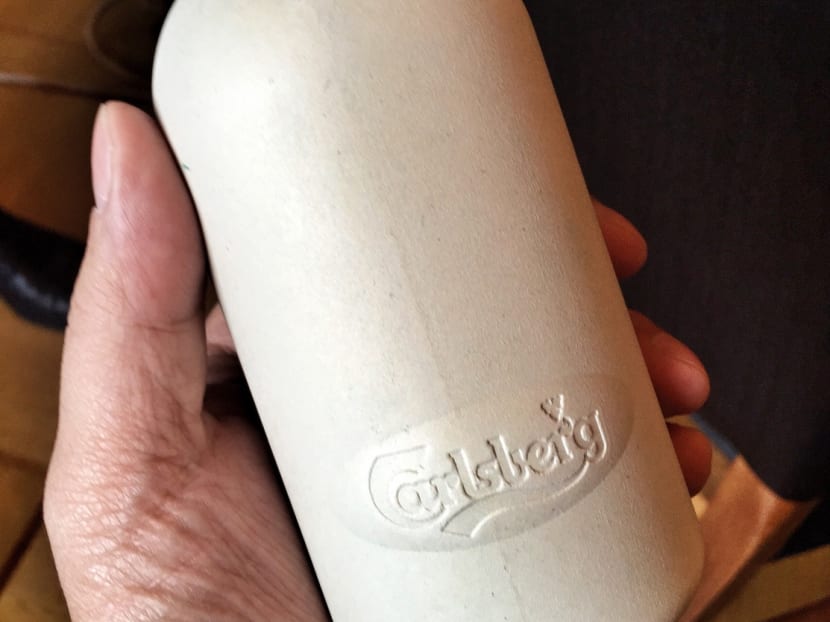
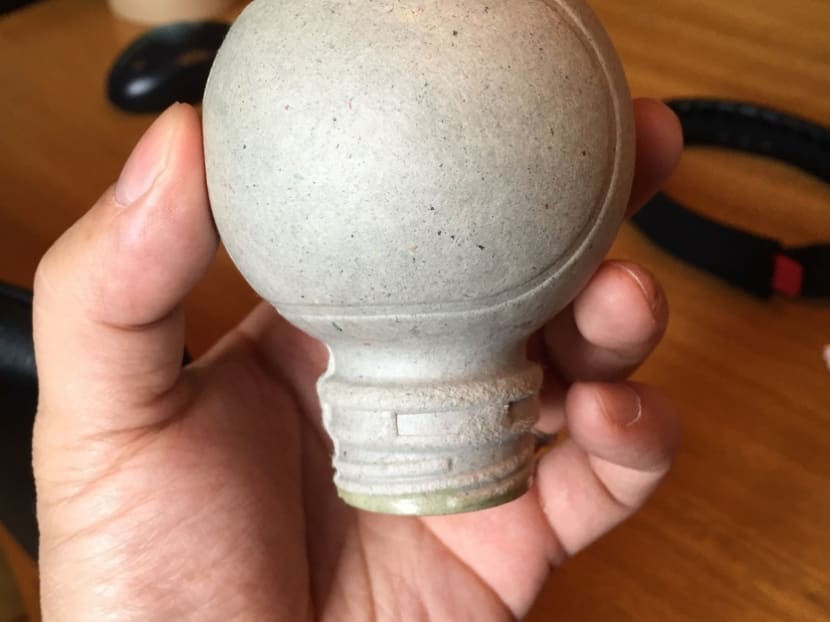
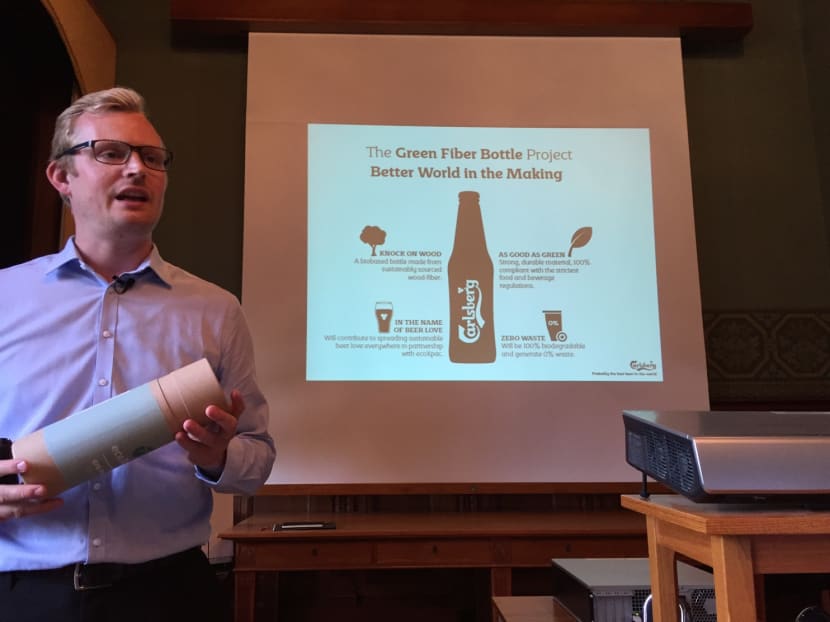
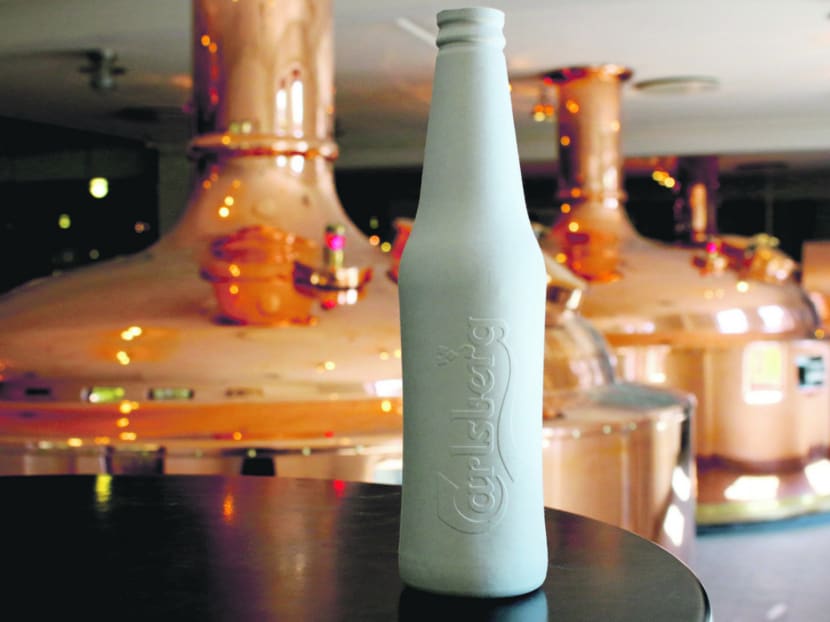
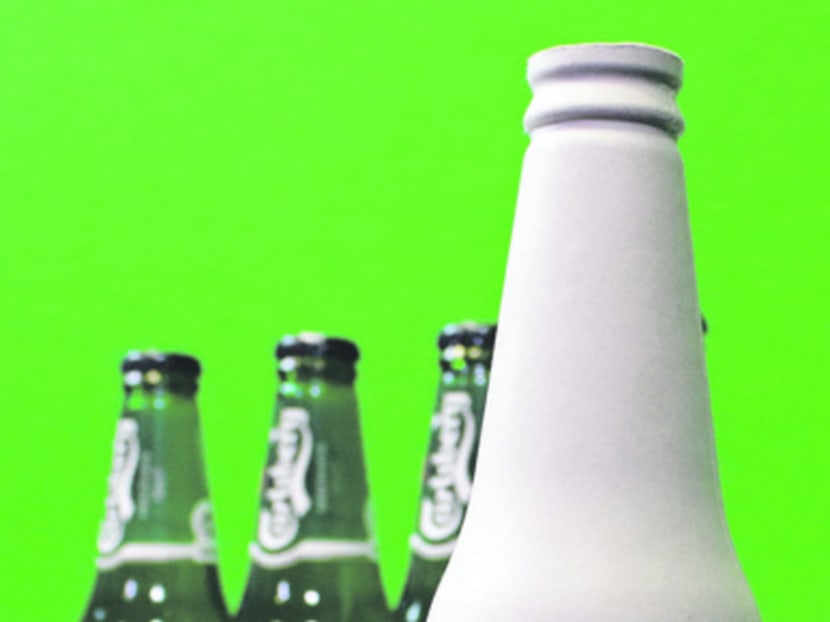
It might draw snide references to drinking wine from a carton or champagne from a paper cup; but Carlsberg’s latest eco-initiative will change the way imbibers crack open a cold one. If it is successful. We are talking about its “Green Fiber Bottle”, of course, which the company hopes to launch in about three years. It’s shaped like a regular beer bottle but made with sustainably-sourced wood fibre instead of glass.
This revolutionary push for a radical alternative is in line with growing concerns of an exponential rise in consumption and its effects on global warming. Simon Hoffmeyer Boas, director of the Carlsberg Research Center in Copenhagen, said that within the next 15 to 20 years, “we will have an increase of three billion middle-class consumers coming into the marketplace, and that is, of course, primarily in Asia”.
Key to the company’s ability to supply this growing demand for beer are the resources used in the packaging. And in the case of Carlsberg’s current production, “45 per cent of the company’s total carbon dioxide emission” comes from packaging, “primarily from melting and processing the packaging that we sell our products in”, Boas explained.
“We are not directly responsible, because it is our suppliers that have that impact, but we want to focus on where we can make the biggest difference.”
It boils down to a basic business reality, said Boas, as the cost of unsustainable products will eventually become more expensive than sustainable products.
And so on Jan 1, 2013, Carlsberg launched a sustainable packaging programme, based on four very simple aspects: Reduce, reuse, recycle and rethink. The last focuses on investments in innovation, as well as partnerships with other companies, such as packaging company ecoXpac, which had been working on conceptualising the Green Fiber Bottle for the past two years, before Carlsberg came on board around eight months ago.
“We try to make our packaging more sustainable and we want to do it by affecting others, for example, our suppliers,” Boas affirmed. “Because if we get the supplier to create more sustainable packaging for us, they can also sell that to others — so they in turn, can, in theory, sell it to our competitors. So by affecting them, we get a much bigger impact globally.
“Of course, we want to be first in the things we do ... but we are going to allow everyone to use it; otherwise, we are not going to achieve true sustainability,” he added.
Essentially, the supplier will own the patent but Carlsberg will have exclusive rights “in the beginning”, he added, “because we have spent so much time and energy in creating it together with them”.
That seems fair enough, say players in the market here. “This is an excellent initiative that Carlsberg has embarked on, and our team has read about this biodegradable fibre bottle with great interest,” said a spokesperson for local bar and restaurant chain Harry’s, which began brewing its own beer in 2008. “Since we also retail our home brew — Harry’s Premium Lager — in bottles, we would definitely be keen to explore the possibility of working with Carlsberg to use this technology for the bottling of our home brew if given the opportunity, since we strongly believe in working towards a more sustainable environment.”
DRINK TO THAT
Such progress is not without its unique set of challenges — and we are not only referring to technological hurdles such as creating a biodegradable waterproof coating and bottle caps. “We also think it is going to be difficult with consumers because, for example, in Asia, consumers really like to drink from glass,” Boas said. “But, personally, I think people will want to try something new, something innovative.”
He also believes this could even win over new consumers who want to live more sustainable lives and be defined by their choices. Some beer drinkers here have applauded this move.
“As long as the beer is delivered fresh and cold enough, why not?” said Cecilia Yee, a counsellor who feels this is a step in the right direction.
However, not everybody agrees: One manager with a regional bank had more questions than praises: While it is not really about the container but the content that mattered when it came to the enjoyment of the product, what was wrong with glass in the first place? “Is it not as sustainable? I mean, it’s made from silica, which is plentiful, and it’s recyclable,” he posited.
Seet Cher Meng, an executive with a major sports brand, added: “Sustainability seems to be the key word among today’s young; maybe not so much in South-east Asia, but globally, brands are finding that the sustainability conversation is an important one. And maybe there is a significant difference in the energy required.”
“Currently, we are not 100 per cent sure (that this will translate to higher cost), but we don’t think so,” Boas said, asserting that once production is up to scale, it will be cheaper to produce such bottles, as it will require very little energy compared with the current usage with glass bottling.
“A lot of the cost is related to the amount of energy used in the process (like with melting of glass and aluminium). It’s not the final number but we expect an 80 per cent lower energy consumption,” he added.
Which should translate to a similar drop in the cost. “If we reduce the weight of the glass bottle by 20g, we reduce the environmental impact by approximately 10 per cent,” he shared.
In theory, beer might even be more affordable. “Of course, we need to get a steady source of raw materials, and we are also looking into alternatives. The dream is that we can, in fact, create a bottle made from barley straw,” said Boas. (Barley is, of course, the main ingredient in beer; whereas the straw is used to produce the packaging and the used bottle can be converted into fertiliser to grow barley).
Say what you like, but beer in a bottle made from wood is progress. Now, who wouldn’t want to drink to that?





